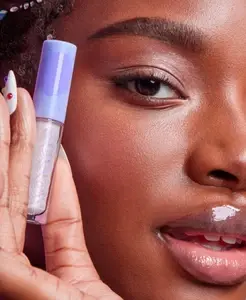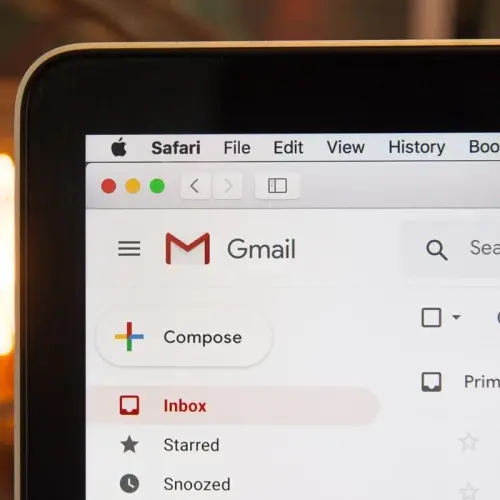Get access to exclusive updates, the latest news and the inside scoop 🍨

Re-Engaging Users With Drip Email Marketing
If you’ve clicked on this article to learn about drip email marketing, you've come to the right place as together.
Don't want to read the whole article? 😏Click here for chapters
- A Guide to Drip Email Marketing 📖
- What Is Drip Email Marketing? 📧
- The Importance of Drip Email Marketing Campaigns
- Re-Engaging Inactive Email Subscribers 👥
- Re-Engagement Email Campaigns
- Drip Email Marketing Strategies 💭
- Drip Email Marketing Subject Lines
- Creating Re-Engagement Campaign Strategies 👌
- N0.3: Automating Re-Engagement Emails
- Strong Engagement Is The End Goal 💪

Written by Madeleine
A Guide to Drip Email Marketing 📖
While the vast majority of email marketers set up permission-based recipient lists, some subscribers will be inactive, making them dead leads for the business at hand. This is an all too common reality where email marketing is concerned and it is something that should be addressed.
If you’ve clicked on this article to learn about drip email marketing, you've come to the right place as together, we will walk you through how your business can re-engage users with a marketing drip campaign. However, before we delve into the nitty-gritty details, let us first answer the most obvious question:
What Is Drip Email Marketing? 📧
Let’s get introduced with drip email marketing, shall we? This form of marketing is a process that sends email content to a list of mail subscribers that have or haven't performed a particular action.
This type of strategy allows online businesses to send the right email to the right subscribers based upon how and when they have interacted with a business. So, as opposed to sending a blanket email to an entire database, merchants can send content that correlates with individual customer experiences.
How is this possible? Well with drip email marketing, automated settings can be formatted in several ways to target audience members uniquely. For instance, brands often send a welcome email when a user subscribes to an email list for the first time. The action of subscribing will then trigger the drip campaign to send out the scheduled introduction content to new leads.
Additionally, a drip email marketing campaign can be set up on a timeline basis. So, rather than waiting for a specific action to be performed, automatic emails can be forwarded to an entire list of email subscribers that will follow suit hours or even days after, depending on what you choose for your business.
The Importance of Drip Email Marketing Campaigns
While the automation aspect of an email drip campaign is convenient, the benefits that they provide make this a vital strategy to include within a business’ marketing plan.
Drip email campaigns have the potential to strengthen the bond between a business and its audience through the use of supplied content for recipients to engage with. During this process, current customers and nurtured prospects will be more likely to consider the product or service that you have to offer.
With a drip email marketing campaign, brands can seamlessly personalise content, while selecting the actions that have or have not been taken by the recipient to stimulate a drip email.
Cast a thought to your email inbox for a moment, we’ve all become pretty familiar with the protocol of emails that we receive when we purchase a product online.
There’s frequently a “Thank you for your purchase” or “Your order is on the way” email to confirm payment and provide tracking details for the order, but what happens when the customer doesn’t make it to the checkout? Will smart businesses leave those potential customers out in the cold? Absolutely not!
See, there will be some users who don’t make it to the checkout, or read the latest blog posts that a company publishes, but never fear because individualised emails will respond to their latest exchange. In short, this means that a business can help potential customers travel further down the sales funnel with the help of drip email marketing.
Before we move on to the next section, we should make it clear that users will not always need to interact with a website to receive a drip email. Businesses can set up their email campaigns so that a customer receives an email after a certain amount of inactivity on their end goes by.
Re-Engaging Inactive Email Subscribers 👥
When it comes to inactive email subscribers, it’s important to know that there will always be recipients on the list who simply aren’t interested in interacting with the business at hand.
If subscribers are ghosting you, it doesn’t mean that there’s no hope of salvaging the relationship. They might just need a little nudge to re-engage with your brand. However, it should be noted that over time, some subscribers will become increasingly inactive and there’s not much that you can do to prevent this. It’s just the nature of email subscribers.
The result of inactive email subscribers isn’t necessarily the fault of the company, but resending email after email with no interaction can be harmful to a brand's marketing strategy, which is why it’s good to clear the list from time to time.
However, before these subscribers are removed from the list for good, merchants should give thought to the fact that these recipients gave their email addresses to the business because they liked something that they had to offer.
So, the best way to re-engage inactive email subscribers is by reminding them of your value. Just remember, the more relevant the content, the more likely they are to be won over again.
Re-Engagement Email Campaigns
As the name suggests, a re-engagement email campaign is an email marketing campaign or an email workflow that has the aim of bringing back inactive subscribers, boosting email engagement and increasing subscriber retention.
As we mentioned above, subscribers can show less interest in email campaigns over time, but this isn’t the be-all and end-all of subscriber relationships. Re-engagement campaigns can make a huge difference and help to restore a business’ engagement rates. This is achieved via a considered strategy that will expectedly result in a more qualitative list of subscribers.
It may surprise you to know that very few email marketers use these types of campaigns to their advantage, but we’d like to change that. As a Shopify and Shopify Plus agency, of course, we have the backs of merchants already on the platform.
So, if you’re wondering how to get started with drip email marketing on Shopify, check out Drip the Shopify integration.
Drip Email Marketing Strategies 💭
Here are some of the most effective types of re-engagement email strategies that you can implement into your marketing plan, with examples from several well-known brands for inspiration. So, let’s take a look at some of the greatest re-engagement email examples to inspire you when creating campaigns for your business:
Incentive Discounts
Inactive subscribers might just need a little extra incentive to buy from a business or use their services so what should the incentive be? Depending on profit margins, a win-win solution could be achieved by providing previous or potential customers with a discount.
Take Nordstrom Rack, for instance, this company’s strategy is to offer incentive discounts when it comes to re-engaging email subscribers. The email sent out to subscribers reads that they’ve missed that customer’s company and that they’re offering a $20 discount for their next order.
So, if that doesn’t remind users why they signed up to Nordstrom’s email list in the first place, we’re pretty sure that nothing will. If no action is taken, it’s safe to assume that this recipient is a dead lead and they can be safely removed from the list.
Extra Value
Excellent drip email marketing campaigns consider everything from the subscriber's perspective which means that they shouldn’t just promote a product or service to the recipient. If your business is hoping to win back its email subscribers, think about the extra value that your business could provide and portray this message across within the targeted message.
Show Subscribers What They've Missed
Give your subscribers the FOMO (fear of missing out), by reminding them of progress they've made so far and what's happening with your business now.
With these types of emails, businesses usually try to build interest and provide their subscribers with some insight on what they’ve missed in the hope that this will be an enticing incentive. We've all seen the email notifications from Facebook and Twitter that show us everything that's happened since we last logged in. Simply put, companies use them because they work.
Take Dropbox, for example, one of their targeted emails uses the simple subject line “It’s been a while, here’s what’s new at Dropbox” followed by an update in the email body with a summary of the latest top features.
Frequency & Topic
One reason why subscribers stop engaging with a business’ emails could be because too many emails are being sent about topics that users potentially no longer care about. So, giving subscribers the option to select a preference puts the control back in the recipient's hands.
For example, the team at Refind knows that people don't want to receive emails about things that they aren’t interested in so they give subscribers the option to customise interests to only receive relevant emails.
Consistent Follow Up
Remember that your subscriber's inbox is usually crowded so your first re-engagement email might go unnoticed. A report assembled by Experian showed that ecommerce customers who receive multiple cart abandonment emails are 2.4x more likely to buy than those who receive only one email.
Note:Subscribers may not have seen your initial re-engagement email so try sending it again. Businesses can choose to either follow up with an email that refers to the previous one, or you could try a couple of approaches to see what catches the reader's eye.
Subscriber’s Choice
Finally, give your email subscribers the chance to leave. People change and a subscriber might have lost all interest, but if that is the case, presenting them with a simple choice will allow audience members to think about whether they’d like to keep receiving future emails from the company at hand.
For example, the online clothing retailer Revolve takes a humorous approach with their “Was it something we said?” subject line. This email contains options for recipients to unsubscribe or update their email preferences to receive only the types of emails that are useful to them.
Drip Email Marketing Subject Lines
A good subject line can make or break an email’s open rate. So, if you’re looking for some inspiration on what re-engagement email subject lines your business should use, here are some templates for you to tweak and personalise within a marketing drip campaign:
- Hey (name), is it us or is it you?
- Be honest with us, we can handle it!
- Are you missing us? Let’s reconnect!
- We need to have THE TALK...
- Hey! Are you still there?
- Are we breaking up?
- Can we make up?
- Here's what you’ve missed…
If fun, attention-grabbing subject lines don’t fit your brand or content, you can opt for a more straightforward approach or entice users with an offer via the following openers:
- It’s been a while...
- $xx off your next purchase inside
- Please come back?
- We miss you, (name)!
- Is this goodbye?
- Do you still want to hear from us?
- Still, want to receive our newsletter?
- Is this your best email address?
Note:Merchants must practise A/B testing for the subject lines that are implemented within a marketing drip campaign to find the strategy that works best for their business. Then, it’s time to deliver value in the content that is provided.
Creating Re-Engagement Campaign Strategies 👌
So, you’ve learnt about the importance of drip email marketing, the role it plays, how to re-engage inactive subscribers, the campaigns that should be utilised and the subject lines that bring results to the table. So, what’s next? It’s time to create a re-engagement campaign strategy of your own. So, here’s how:
N0.1: Segment Inactive Subscribers
The first step towards any successful email reactivation strategy is segmentation. In Layman’s terms, this means that merchants will need to group the subscribers who haven't engaged with their emails within a given time frame and place them on a separate email list.
Now, depending on what a business offers its email subscribers and how often emails are sent, the term "inactive" will mean different things to different businesses.
A simple way to segment inactive subscribers is to group them based on whether they've opened emails or clicked on any of the offers listed in the last 6 months. Any user that falls into this category is an inactive subscriber and needs to be part of a re-engagement list.
N0.2: Creating Re-Engagement Emails
Once the subscriber groups are ready, it's time to whirl into action and start creating a re-engagement email template. It's important to create a new email that's tailored to the inactive group.
Additionally, the call to action (CTA), should be that subscribers remain on the list or unsubscribe if they have no intention of engaging with your emails again. Yes, this reality is painful, but trust us, it's better for your costs and email statistics in the long run.
So, in a nutshell, the goal of a re-engagement campaign is to grab the attention of your subscribers and restate your value proposition.
N0.3: Automating Re-Engagement Emails
While one win-back email might be enough to convince some people to re-engage, an effective re-engagement email campaign usually requires a few interactions to win back a subscriber for good.
Shopify and Shopify Plus merchants should check out Drip, the email and SMS marketing automation tool for ecommerce stores via the Shopify App Store to start sending automated re-engagement emails to their email subscribers.
N0.4: Campaign Results
After you've sent out your re-engagement emails, it's time to sit back and analyse the results. A successfully reactivated subscriber is usually determined by whether they opened the email, or clicked on the offer.
A company’s email marketing goals will ultimately determine how subscribers are qualified, though the click-through rate (CTR) is a better measurement of actual engagement than the open rate of an email campaign.
Merchants should then focus on segmenting reactivated subscribers and nurturing them to strengthen the relationship between customer and company. After which, the subscribers that do not engage with an email campaign (in the form of opens or clicks) should then be removed from the active list. Continuing to email these subscribers will only damage your sender reputation and skew your campaign data.
Note:You'll know your re-engagement campaign is successful when your spam complaints decrease, your deliverability rate increases and your overall email conversion rates improve.
Strong Engagement Is The End Goal 💪
Inactive subscribers are a reality for every email marketer and while a re-engagement campaign might leave you with a smaller list, the remaining active subscribers will be more engaged.
Naturally, stronger engagement increases the effectiveness of email newsletter campaigns alongside sender reputation so, businesses will be left with a more accurate view of what's working and what's not. Take it from us, this is a very strong position to be in.
Want to learn How To Grow Your Ecommerce Business With Email Marketing? Check out our article to learn more on the subject.
So, that concludes our guide to re-engaging users with drip email marketing. We hope that you’ve found it useful. If you’re actively looking to work with a Shopify agency designer or developer to assist you with your business, we’d love to hear from you. Get in touch to get started!
Get Started with Shopify
Looking to get started with Shopify? Take advantage of Shopify's 14-day free trial, no credit card is required.
If you're actively looking to work with a Shopify agency designer or developer to assist you with your business, we'd love to hear from you. Get in touch to get started!
Want to read some more?
Have a look over more posts related to this one















